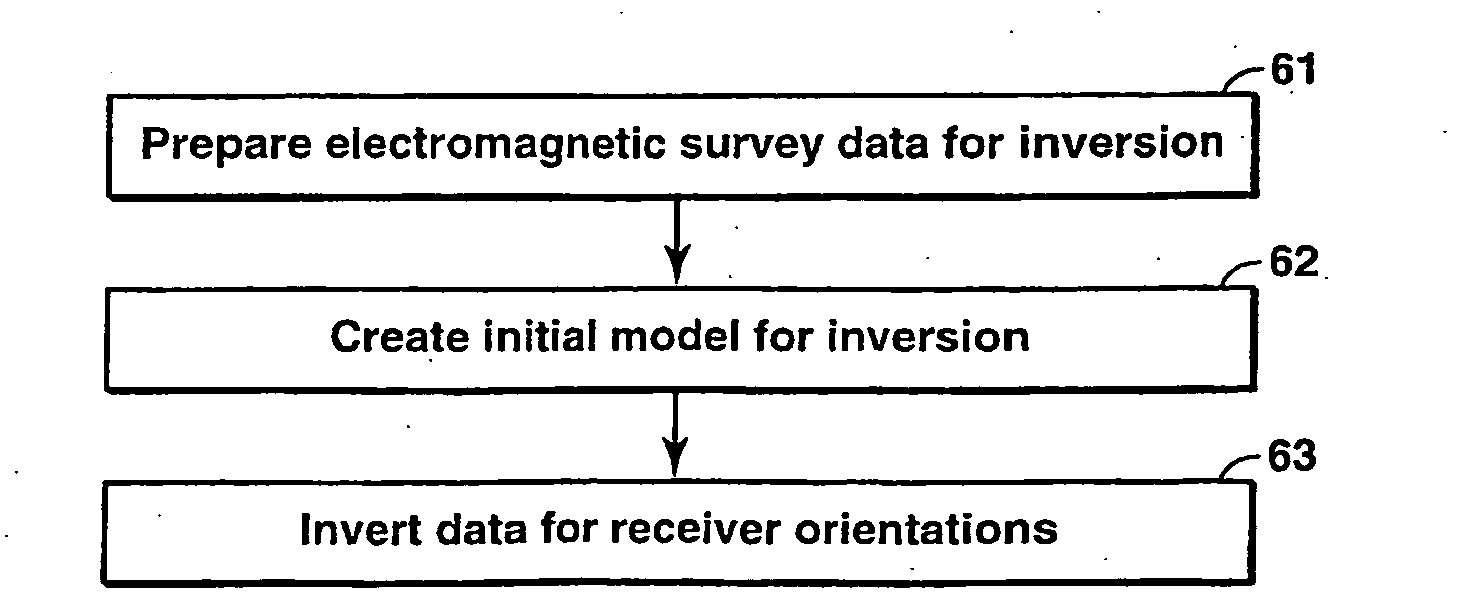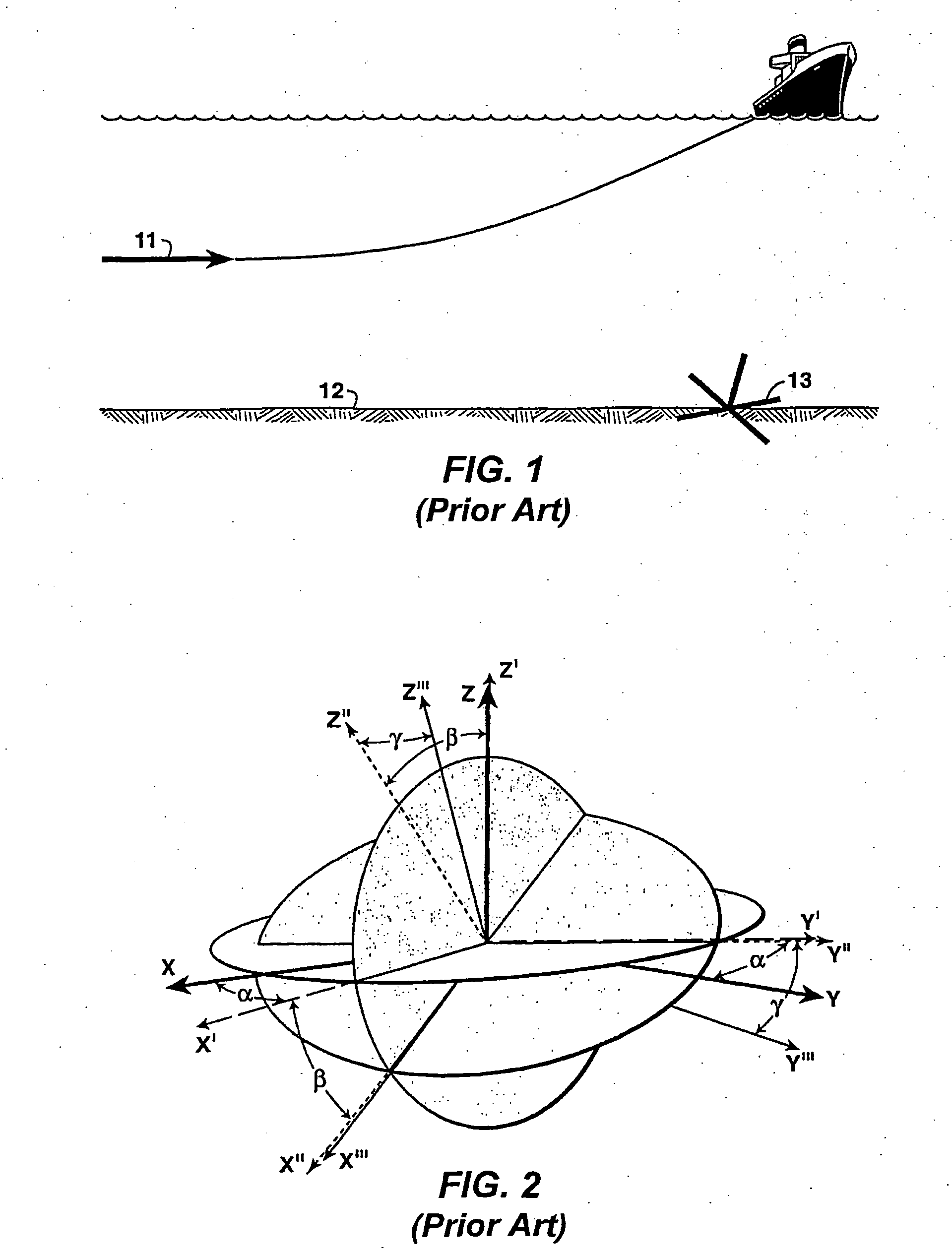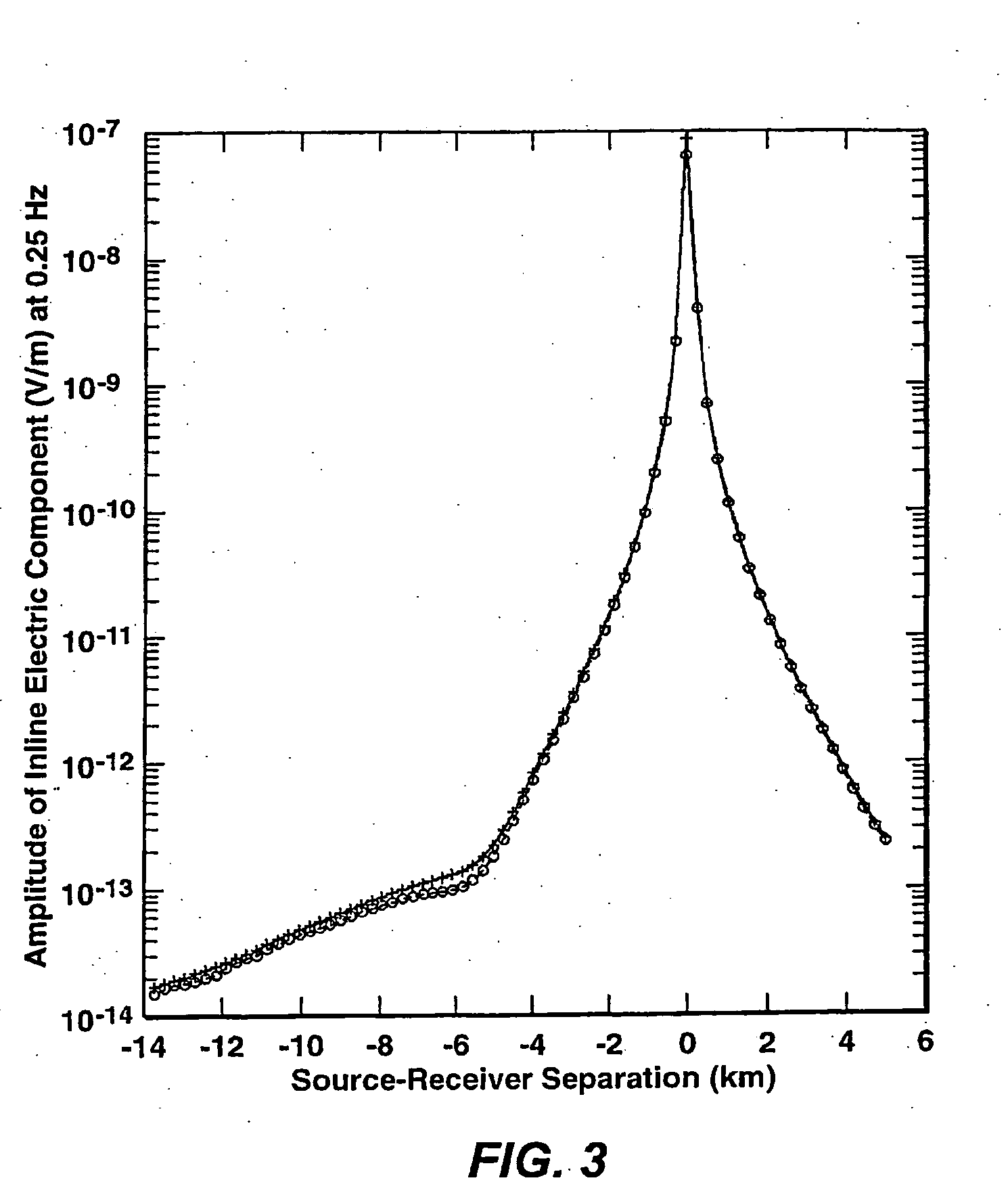Method for Determining Receiver Orientations
a receiver orientation and receiver technology, applied in the field of geophysical prospecting, can solve the problems of low receiver azimuth accuracy provided by this method, the reliability of the present direct measurement system of marine csem receivers, and the significant effect of decomposition components
- Summary
- Abstract
- Description
- Claims
- Application Information
AI Technical Summary
Problems solved by technology
Method used
Image
Examples
example
[0033]A 1D model with the same source and receiver geometry as the example of FIGS. 3-5 was used to generate a synthetic data set at frequencies of 0.125, 0.25, 0.5, 1.25, and 2.0 Hz for a receiver with (α, β, γ)=(330.0, 2.0, 4.0). This data set was then used to test how well the present inventive method could determine the receiver orientations. In this example, the inversion process was set up for simultaneously determining the receiver orientations and resistivity model. The initial resistivity model consisted of air, seawater and a uniform half-space for the sedimentary seafloor and the initial angles for receiver were (300.0, 0.0, 0.0). After applying the present inventive method, the resulting orientation angles were (α, β, γ)=(329.97, 1.95, 3.88). The recovered angles are very close to the angles used to generate the synthetic data, demonstrating the accuracy of the inventive method.
PUM
 Login to View More
Login to View More Abstract
Description
Claims
Application Information
 Login to View More
Login to View More - R&D
- Intellectual Property
- Life Sciences
- Materials
- Tech Scout
- Unparalleled Data Quality
- Higher Quality Content
- 60% Fewer Hallucinations
Browse by: Latest US Patents, China's latest patents, Technical Efficacy Thesaurus, Application Domain, Technology Topic, Popular Technical Reports.
© 2025 PatSnap. All rights reserved.Legal|Privacy policy|Modern Slavery Act Transparency Statement|Sitemap|About US| Contact US: help@patsnap.com



